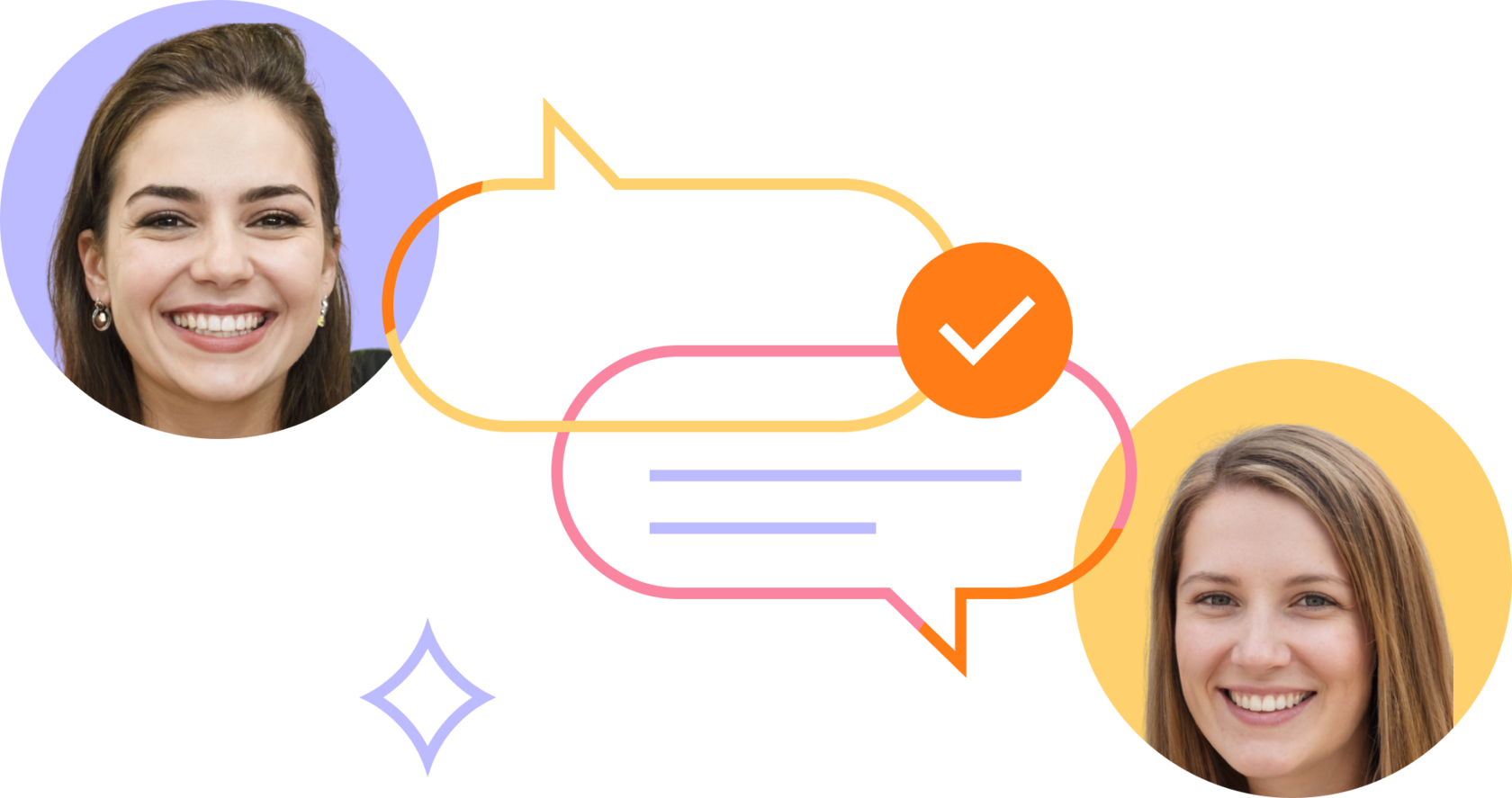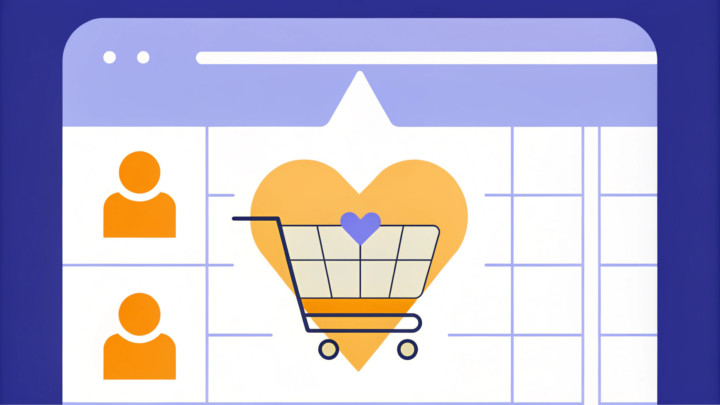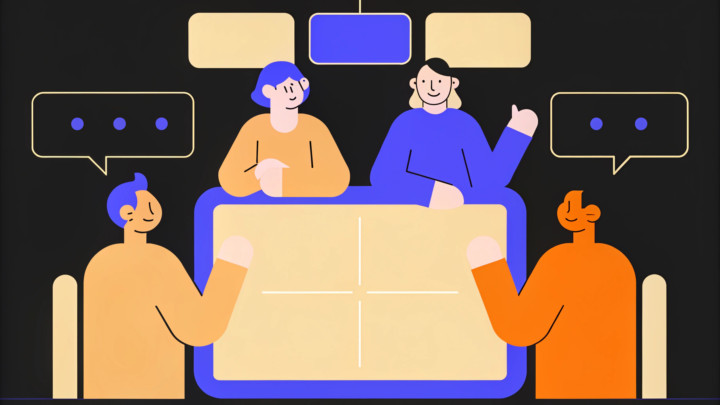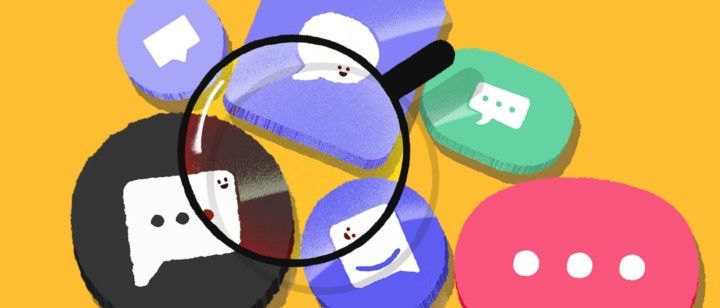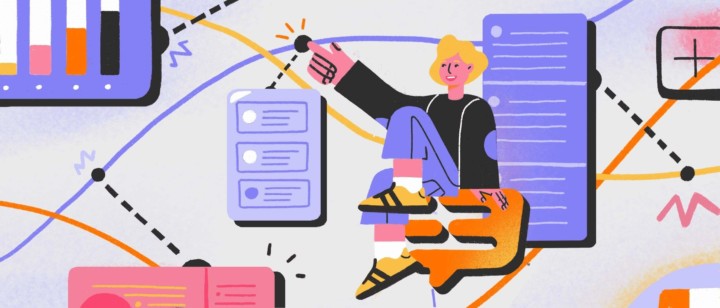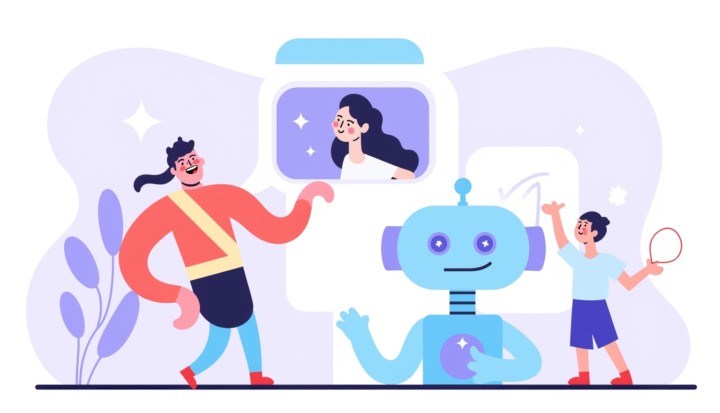How AI support bot resolves 40% of all chat inquiries, replacing two customer service agents
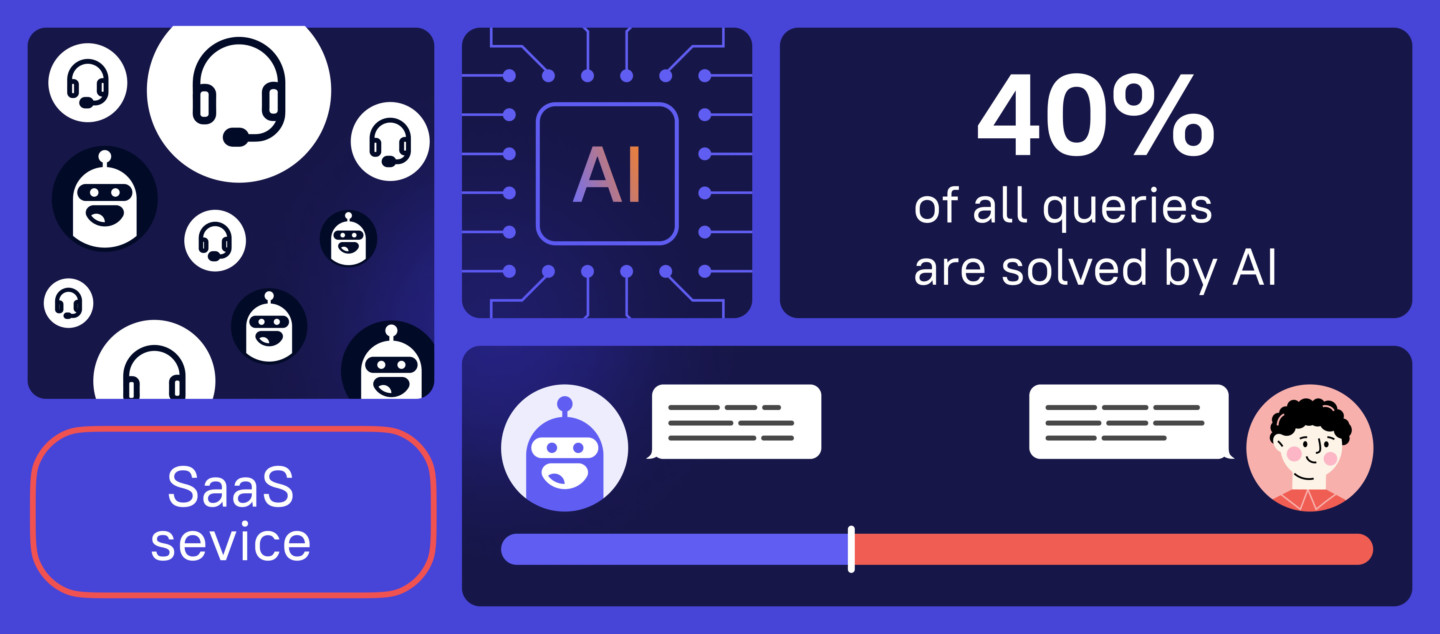
How can you entrust customer communication to AI without losing in quality of responses? Tati, Head of Customer Service at BizBots, shares her experience with the Dashly AI support bot.
AI support bot from Dashly is a chatbot powered by artificial intelligence. It can be trained in just 3 minutes using info from your website and your help center materials, formulates a response within one minute, and provides round-the-clock user consultation.
Challenge: Handle the growing number of user queries without scaling the support team.
Solution: Implement Dashly AI support bot to resolve part of issues without any human involvement.
Results 👇

The company
BizBots is a convenient platform for creating automated marketing funnels and managing chatbots and automated messages across messengers and social media. Their target audience is marketers and sales reps who want to automate online sales.
We’ve worked with BizBots since 2022. Dashly’s tools help them collect and nurture leads, as well as respond to user inquiries. Before implementing the AI support bot, we had set up:
- Triggered email campaigns,
- Pop-ups,
- Live chat on the website,
- Welcome bot,
- Knowledge base.
Why they decided to implement an AI support bot
The customer base of BizBots is growing, and so is the volume of inquiries to the customer support department. We wanted to automate responses to simple, repetitive user questions, which make up about 30-40% of all queries.
With the help of the AI bot from Dashly, we planned to:
- Save on hiring new staff;
- Speed up response times to users;
- Focus our operators on solving more complex issues.
Here are some numbers to picture BizBots customer service work 👇

Why they chose AI support bot from Dashly
First, Tati’s team considered creating a custom AI bot tailored specifically for BizBots. But it was too expensive and time-consuming.
So they decided to test Dashly’s AI support bot because it is:
- More cost-effective — Tati and her team can use Dashly’s AI bot for 4.5 years for the amount that would have been required to develop a unique bot from scratch;
- Faster — the AI bot is trained in just 3 minutes using company’s website and already existing materials;
- More convenient — there was no need for developers, as all issues were resolved with Dashly’s support and using the AI bot settings in the personal account;
- More reliable — no need for integration with the live chat, as all tools are available within the same service.
AI support bot implementation
Testing the AI bot’s responses
Working closely with Tati’s team, we trained the AI bot using their knowledge base, which is published within the Dashly platform. We then asked the bot some frequent questions from the chat and exported its answers for review.
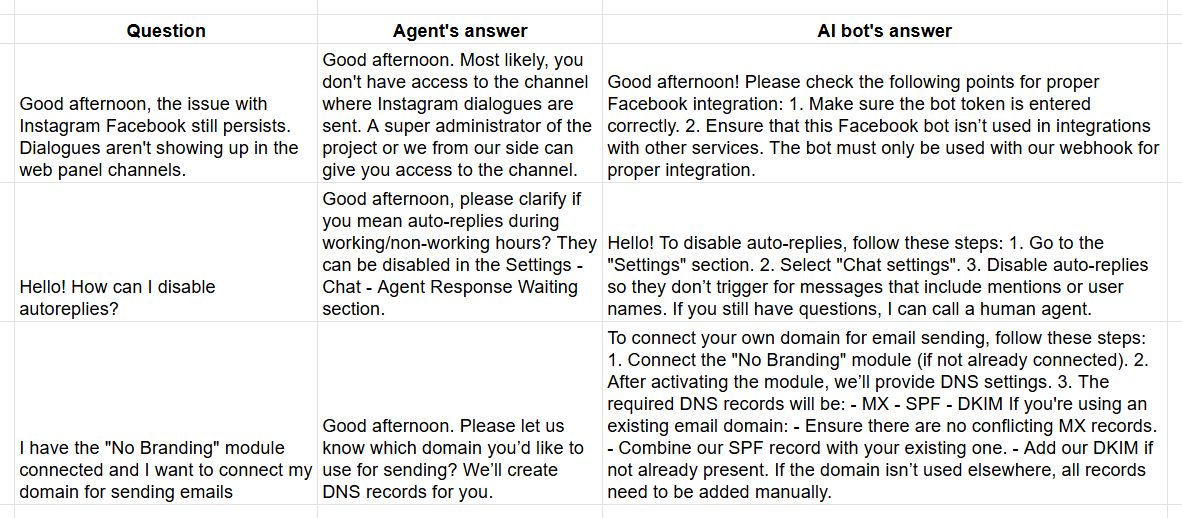
In the initial export, almost 50% of the AI bot’s responses were incorrect. However, with each iteration, the number of incorrect responses decreased. Currently, the bot gives about 2.5% incorrect answers out of 4,000 questions, which is an acceptable rate for us.
Enhancing the quality of AI bot responses
To reduce the number of incorrect responses by twentyfold, we improved the knowledge base and adjusted the tone of voice.
Knowledge base refinement: The AI bot shows the data sources it used to generate a response. We edited the articles that caused incorrect answers. Additionally, since the AI bot cannot interpret information from screenshots, we added text descriptions to the articles.
In AI bot responses, you can see where the bot sourced its information from and then refine the corresponding article as needed.
We adjusted the tone of voice. Initially, the bot provided responses in an informal manner, which didn’t match our other communications. In the bot’s settings, we changed the communication style to neutral: the bot now responds in a friendly yet polite manner.
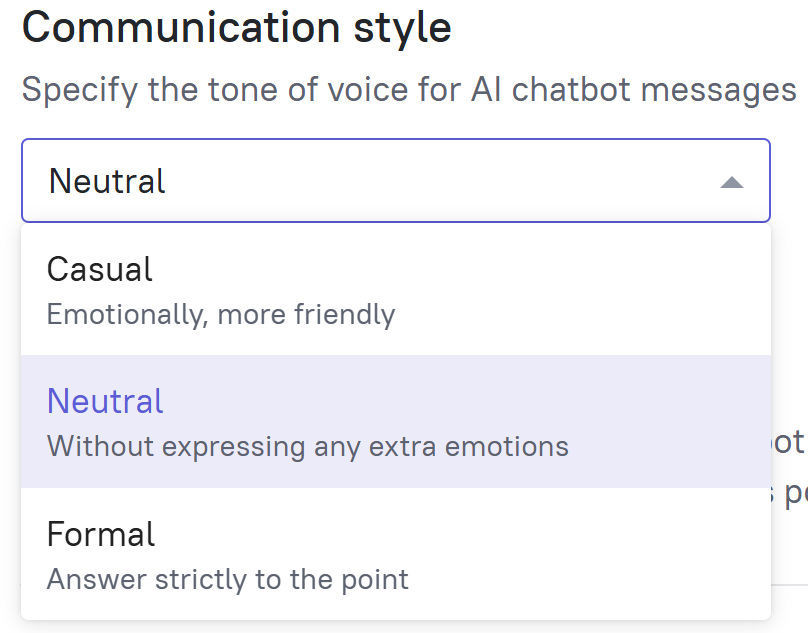
Our customers are used to receiving detailed responses, so we configured the settings to ensure the bot’s answers have the appropriate length that suits our needs:

In the early iterations, there were many inaccurate responses because the bot was too “creative”: it would interpret the knowledge base data in its own way if it couldn’t find the right answer. Therefore, we reduced its “creativity” in the settings. Now, it responds according to the knowledge base, and if it can’t find the information, it calls for an agent.

Together with the BizBots team, we refined the bot so that it would avoid using the word “problem” in its responses. We wanted to ensure the bot’s replies were more positive.

Testing the AI bot
To see the AI support bot in action, we integrated it into one of the flows of the Welcome bot. We chose the topic of payments and closing documents because this section in the knowledge base was described in the greatest detail.
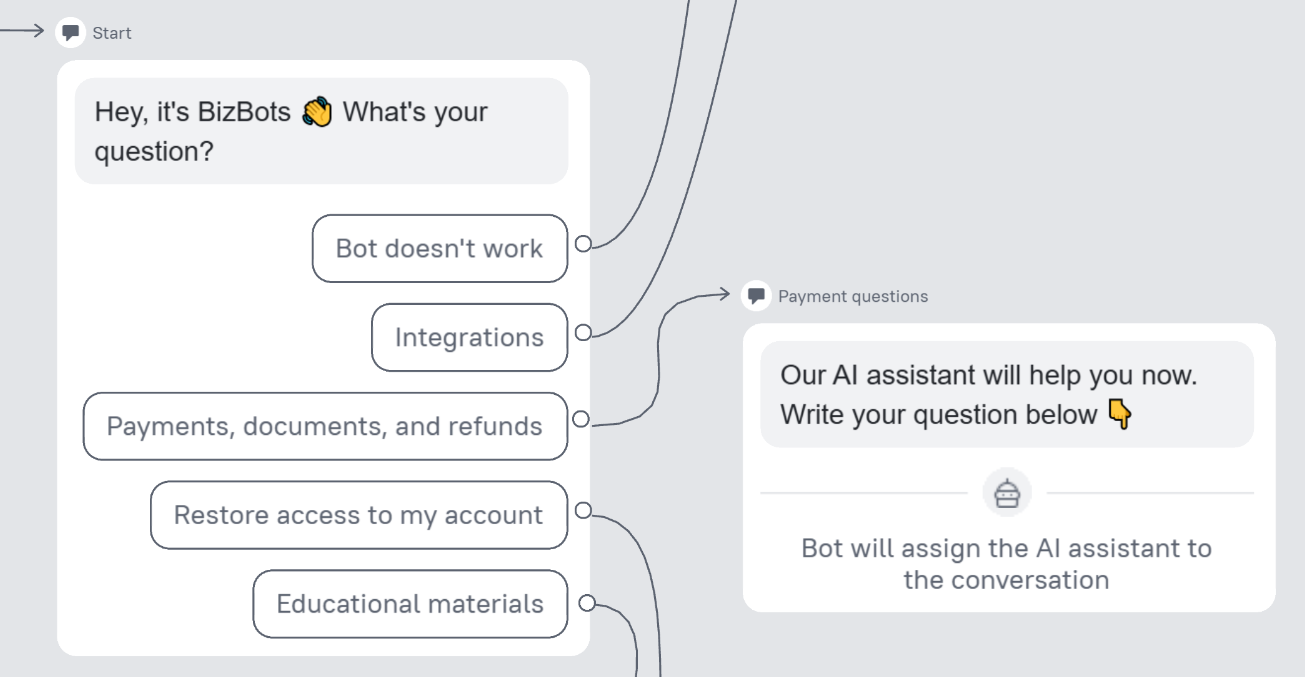
Tati and her team were a bit worried about customers’ reaction to interacting with an AI bot, as they were used to live chats with agents. However, we chose to be transparent with clients and told them straightaway that an AI bot would be responding.
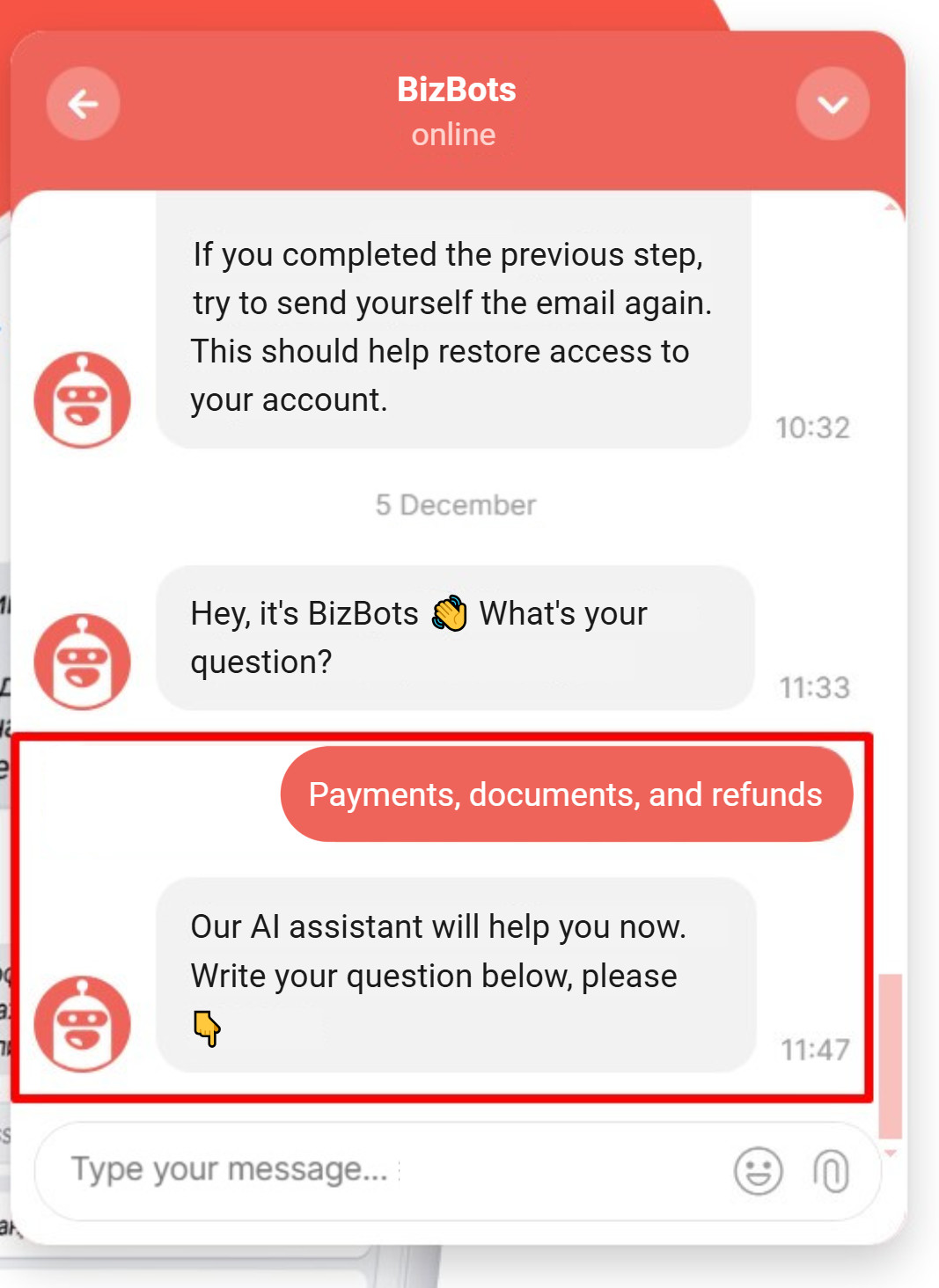
AI bot test results: No negative feedback from users. On the contrary, customers appreciated getting answers 24/7, without waiting for agents to start their workday.
They were okay with some incorrect responses too, as the bot promptly offered to call an agent if it couldn’t find the necessary information.
Our test-drive was successful. So BizBots decided to make it the first-line support agent and transfer all chat queries to it.
All chat queries now first go through the AI bot
If the bot can’t find the required information, it switches a chat to an agent.
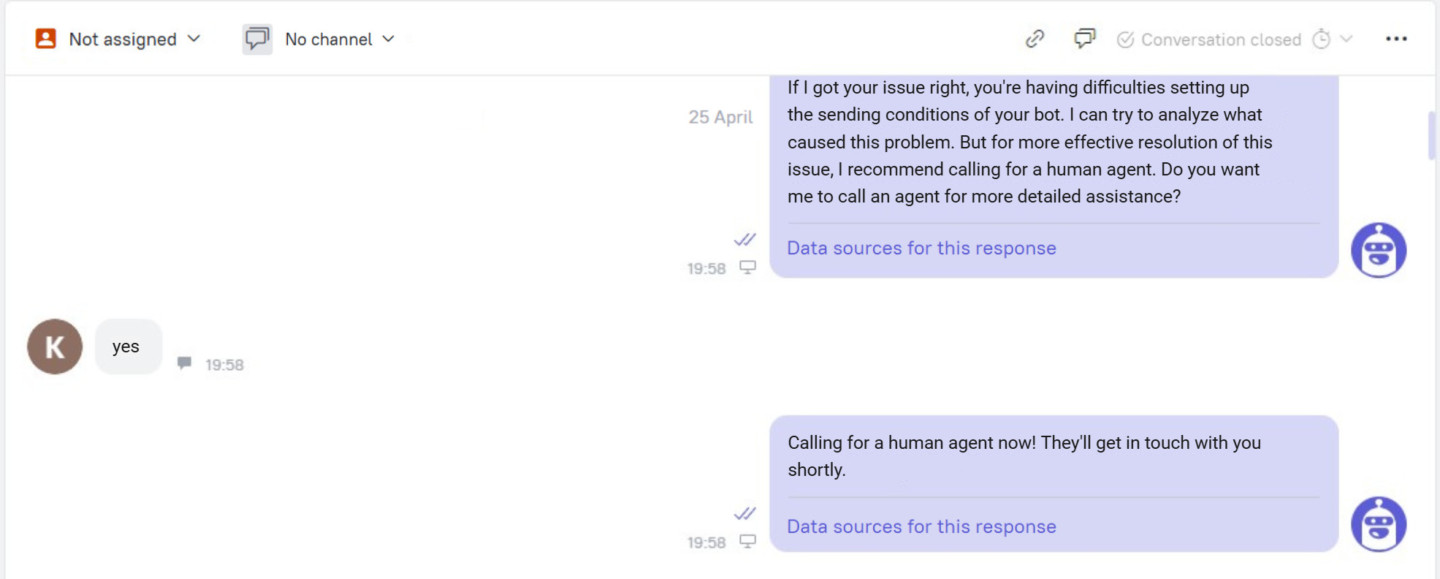
We use a generative artificial intelligence model that understands free-form queries. Therefore, a user can phrase a question in a way that’s convenient for them, and the AI bot will understand it and find the answer in the knowledge base.
The bot independently resolves about 40% of chat queries:

User satisfaction levels didn’t drop after the AI bot was implemented. The average quality rating for the customer support is 4.8, and in June 2024, the AI bot got 4.83.
Before launching the AI support bot, agents were concerned it would respond incorrectly. We explained that if they helped refine the bot, it would free them from monotonous questions. Therefore, the agents actively participated and continue to be involved in training the bot: they identify incorrect responses and suggest refinements for their knowledge base.
Now, the AI bot independently manages almost all repetitive questions. The agents focus on complex cases that require a creative approach. This helps prevent burnout from routine.
Results
The AI bot independently handles simple, repetitive questions, allowing operators to dedicate more time to complex cases. The satisfaction level has risen because users receive answers to their questions more quickly, even outside of the agents’ working hours.
| Before AI bot | After AI bot | Comments | |
| Number of agents | Didn’t change | BizBots planned to hire two more agents, but with the AI bot integration, they turned down this idea. The team saves about $40k per year because there’s no need to expand the staff. | |
| Number of questions processed by agents | 10 000 | 6 000 | AI bot independently resolves 40% of questions, allowing agents to spend more time on complex cases. |
| First response time | Sped up the first response by 21% | After the AI bot was connected, users got an answer to their question 30 seconds faster. | |
| User satisfaction rating | 4.8 | 4.85 | The level of user satisfaction has increased because now clients receive answers to their questions around the clock. |
